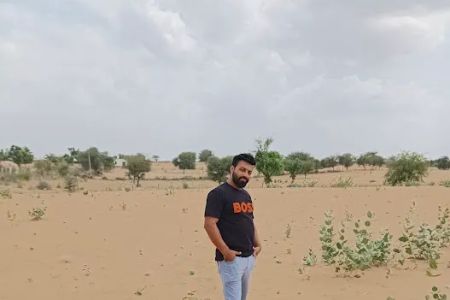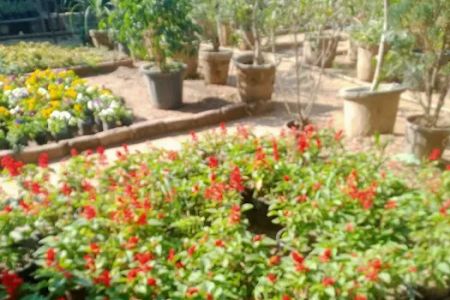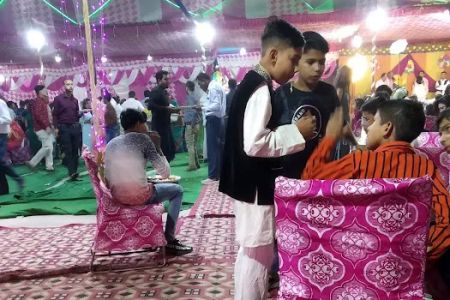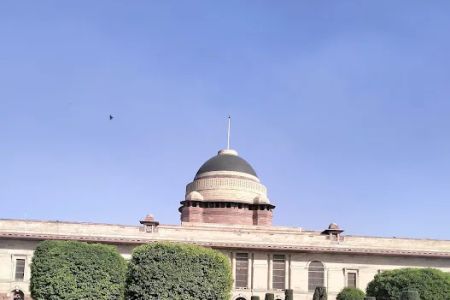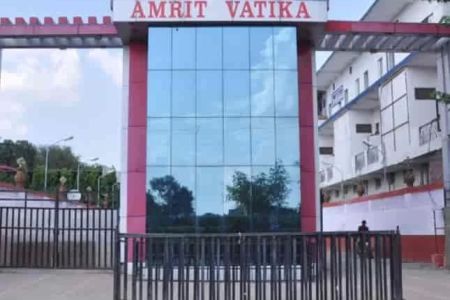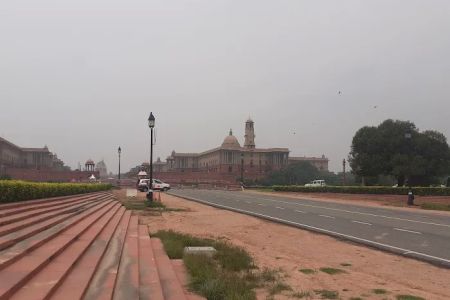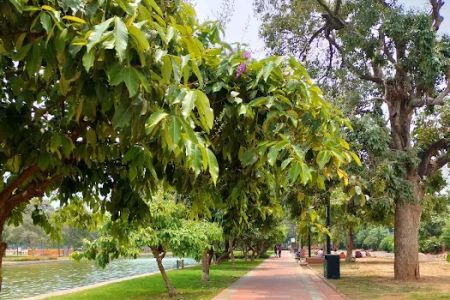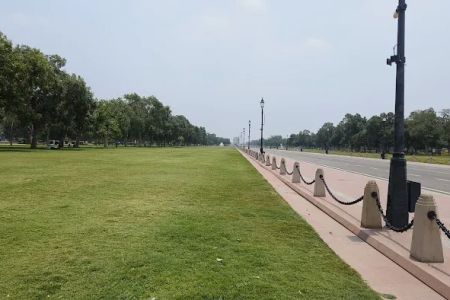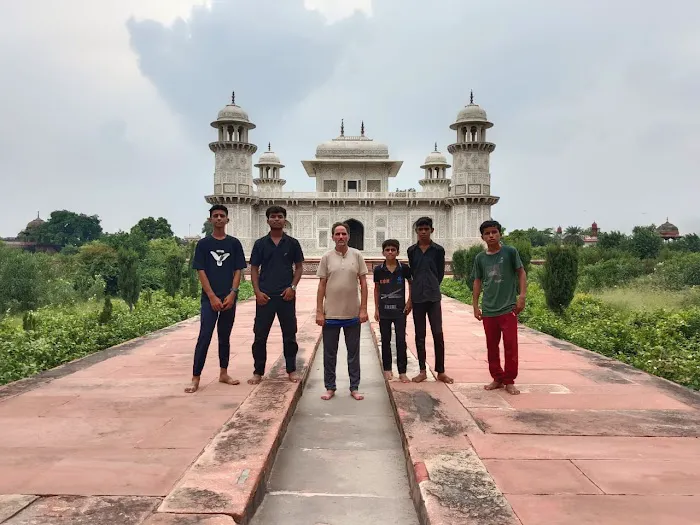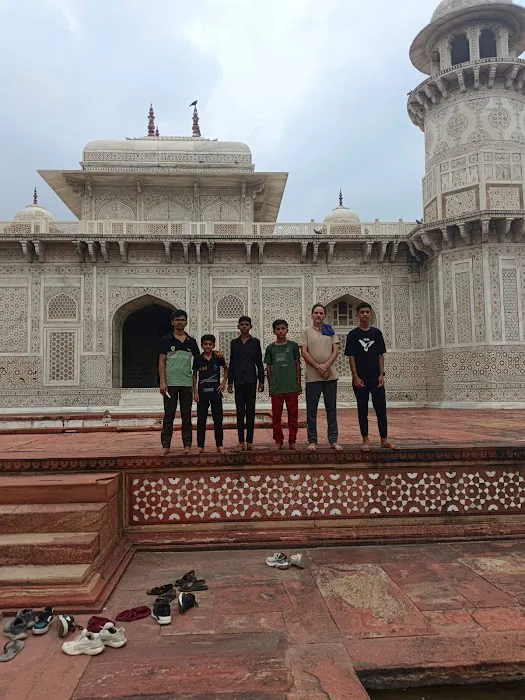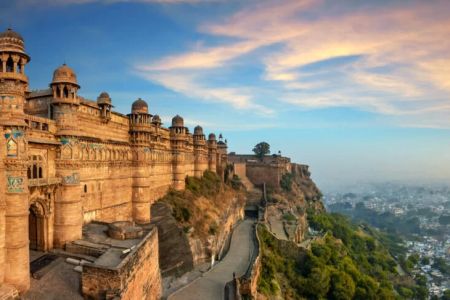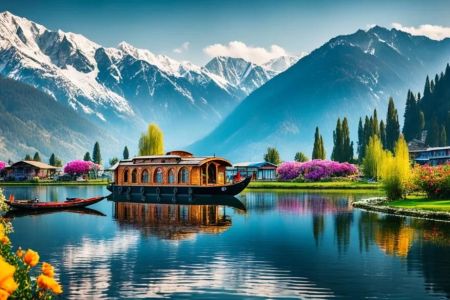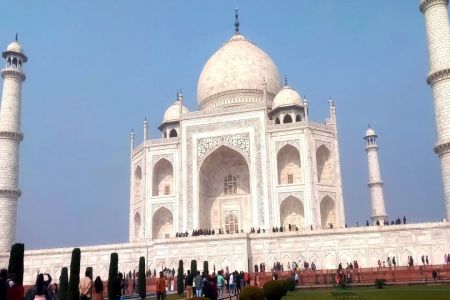Delhi, a city steeped in millennia of history, is a living museum where every corner tells a story. While the majestic Red Fort and the towering Qutub Minar often steal the spotlight, the capital is dotted with numerous hidden gems that offer profound historical insights and serene beauty. Among these, a particular monument is affectionately known by many locals as the "Mini Taj Mahal" of Delhi. This evocative moniker often refers to Safdarjung's Tomb, a magnificent garden tomb that stands as a testament to late Mughal architectural prowess. Unlike its grander counterpart in Agra, this "Mini Taj Mahal" provides a more intimate and less crowded experience, allowing Delhiites to truly connect with a significant piece of their city's heritage.
Despite the provided address pointing to a general area in the Central Secretariat, the "Mini Taj Mahal" in Delhi is widely recognized as Safdarjung's Tomb, located slightly southwest of this precise coordinates but still within easy reach of the central administrative zone. This article will serve as your comprehensive guide to Safdarjung's Tomb, often referred to by its popular nickname, inviting you to discover its historical charm, architectural splendor, and the tranquility of its surrounding gardens. We will delve into its convenient location, the experience it offers, and why it remains a cherished spot for those seeking a blend of history and calm in the bustling capital.
Location and Accessibility
While the provided address J675+HJC, Rajpath Area, Central Secretariat, New Delhi, Delhi 110011, India, indicates a central location, the monument widely recognized as the "Mini Taj Mahal" in Delhi is Safdarjung's Tomb. This exquisite tomb is located at Safdarjung Lane, near Lodhi Garden, New Delhi, Delhi 110003. It is situated in South Delhi, amidst a diplomatic enclave, wide boulevards, and close to prominent landmarks like Lodhi Garden and Khan Market. This strategic placement makes it easily accessible for residents from various parts of Delhi.
For those relying on public transportation, Safdarjung's Tomb is exceptionally well-connected. The nearest metro station is Jor Bagh on the Yellow Line of the Delhi Metro, which is just a short walk or a quick auto-rickshaw ride away. This ensures excellent connectivity from North, South, and Central Delhi. Additionally, numerous Delhi Transport Corporation (DTC) bus routes serve the area, with several bus stops conveniently located right outside the tomb's entrance, providing widespread access. If you prefer to travel by personal vehicle, there is usually ample parking available in the vicinity, making it a hassle-free visit for those driving down. The area is well-maintained with clear signage, contributing to a smooth and pleasant journey to this historical site. Its location, though not exactly at the given Rajpath address, remains highly convenient for Delhiites seeking to explore a significant piece of their city’s rich heritage.
Services Offered
As a historical monument and garden maintained by the Archaeological Survey of India (ASI), Safdarjung's Tomb (Delhi's "Mini Taj Mahal") offers a range of facilities and services aimed at enhancing the visitor experience and preserving the heritage site. These are not commercial services in the traditional sense but rather provisions for public convenience and appreciation of the monument.
Ticketed Entry: Unlike a public park, there is an entry fee to access Safdarjung's Tomb. This fee contributes to the maintenance and preservation of the monument and its gardens. Indian citizens and children typically benefit from a significantly discounted rate, while a higher fee applies to foreign visitors.
Well-Maintained Gardens (Charbagh Style): The monument is set within beautiful 'Charbagh' (four-part) gardens, typical of Mughal architecture. These gardens are meticulously maintained with lush green lawns, geometric water channels, and flowerbeds, providing a serene environment for visitors.
Walking Paths and Seating Areas: Paved pathways allow visitors to explore the entire complex comfortably, encircling the tomb and leading to various vantage points. Benches and shaded areas are available for visitors to rest and enjoy the peaceful ambiance.
Public Restrooms: Standard public restrooms are usually available within the monument complex for the convenience of visitors.
Information Boards: Educational and historical information boards are typically placed around the tomb, offering insights into its history, architecture, and significance, enriching the visitor's understanding.
Security and Surveillance: Given its status as a historical monument, the site generally has security personnel to ensure the safety of visitors and the preservation of the structure.
Photography Opportunities: Visitors are permitted to take photographs (though typically not with professional equipment without prior permission), making it an excellent spot for enthusiasts to capture its architectural beauty and serene surroundings.
Features / Highlights
Safdarjung's Tomb, often lovingly called Delhi's "Mini Taj Mahal," is a monument brimming with architectural grandeur and historical significance. Its features and highlights make it a captivating destination for locals seeking both beauty and a glimpse into the past.
Late Mughal Architecture: The tomb is a prime example of late Mughal architecture, marking one of the last grand garden tombs built in Delhi. Its design, with a large dome, four minarets, and intricate red sandstone and marble work, clearly draws inspiration from the Taj Mahal and Humayun's Tomb, earning it its popular nickname.
Symmetrical Charbagh Garden: The mausoleum is set within a magnificent Charbagh, a Persian-inspired quadrilateral garden layout. This symmetrical design, with water channels dividing the garden into four equal parts, enhances the tomb's grandeur and offers a tranquil, visually appealing setting.
Intricate Stone Inlay and Carvings: While perhaps not as elaborate as the Taj Mahal, the tomb features beautiful stone inlay work and intricate carvings on its facade and interiors. The blend of red sandstone and white marble creates a striking contrast and showcases fine craftsmanship.
Peaceful Ambiance: One of the most cherished highlights for Delhiites is the relatively peaceful and uncrowded atmosphere compared to other major monuments. This allows visitors to enjoy the beauty and history at their own pace, making it perfect for quiet contemplation, leisurely walks, and photography.
Historical Significance: The tomb is the final resting place of Safdarjung, the Nawab of Awadh and Prime Minister of the Mughal Emperor Ahmad Shah Bahadur. It provides a valuable insight into the political and architectural landscape of 18th-century Delhi.
Elevated Platform and Corner Pavilions: The main mausoleum stands on a high platform, offering impressive views of the surrounding gardens. Four octagonal towers (minarets) at the corners, along with several smaller pavilions, add to its structural grandeur and symmetry.
Natural Oasis in the City: Surrounded by lush greenery, the tomb complex acts as a vital green lung in South Delhi. It's common to spot peacocks and various birds, adding to the natural charm and making it a pleasant escape from urban life.
Promotions or Special Offers
As a historical monument maintained by the Archaeological Survey of India (ASI), Safdarjung's Tomb ("Mini Taj Mahal") does not typically offer commercial promotions or special discounts in the manner of a private business. Its access and pricing are regulated by government policies for heritage sites.
However, there are "offers" in terms of how the pricing is structured to benefit various visitor groups, making it accessible and appealing to locals:
Differential Pricing for Indian Citizens: A significant "special offer" for Delhiites and other Indian citizens is the considerably lower entry fee compared to foreign tourists. This makes visiting the monument highly affordable for the local population.
Free Entry for Children Below a Certain Age: Children below a specific age (typically 15 years) are usually granted free entry, encouraging families to visit and educate younger generations about India's heritage.
Free Access on Heritage Days: On certain designated 'Heritage Days' or special government initiatives, some ASI monuments occasionally offer free entry to the public. While not a regular promotion, it's worth checking official ASI announcements for such opportunities.
Student Discounts (with Valid ID): While not universally advertised for all ASI sites, students with valid ID cards may sometimes be eligible for discounted entry, further promoting educational visits.
It's always advisable for visitors to check the latest entry fee information on the official Archaeological Survey of India (ASI) website or at the monument's ticket counter, as prices and policies can be subject to change. The primary appeal of Safdarjung's Tomb remains its inherent historical and architectural value, offered at a very reasonable price for local residents.
Contact Information
For a historical monument like Safdarjung's Tomb, often referred to as Delhi's "Mini Taj Mahal," direct contact information such as a dedicated phone number or email address for general public inquiries is usually not provided as it would be for a commercial establishment. These sites are managed and maintained by the Archaeological Survey of India (ASI).
Should you have specific administrative queries regarding the monument, permission for special photography, or general information about ASI sites in Delhi, it would be best to contact the Archaeological Survey of India directly. Their general contact information is usually available on their official website.
Address:
Safdarjung Lane, near Lodhi Garden, New Delhi, Delhi 110003, India
(Note: The provided address J675+HJC, Rajpath Area, Central Secretariat, New Delhi, Delhi 110011, India, points to a general area. Safdarjung's Tomb, known as the "Mini Taj Mahal," is located as specified above.)
For any immediate concerns or emergencies at the monument, visitors should contact local Delhi Police services.
Conclusion: Why Safdarjung's Tomb is Suitable for Locals
Safdarjung's Tomb, Delhi’s beloved "Mini Taj Mahal," holds a special place for local residents, offering a unique blend of historical immersion, architectural grandeur, and serene respite. In a bustling metropolis like Delhi, finding pockets of peace and beauty that are easily accessible is invaluable, and this monument perfectly fits the bill.
For Delhiites, its suitability lies in several key aspects. Firstly, its convenient location in South Delhi, easily reachable by metro and road, makes it an ideal destination for a spontaneous visit or a planned outing. Unlike the often-crowded major tourist hotspots, Safdarjung's Tomb provides a more tranquil experience, allowing visitors to leisurely explore its magnificent Mughal architecture and beautifully maintained Charbagh gardens without feeling rushed. This peaceful ambiance is perfect for those seeking a quiet escape from the city's ceaseless energy, whether for a meditative stroll, a picnic with family, or a reflective afternoon.
Secondly, as a significant historical monument, it offers a tangible connection to Delhi's rich past. Locals can delve into the narratives of the late Mughal era, appreciate the intricate craftsmanship, and witness the architectural inspirations that shaped later iconic structures. It serves as an educational outing for families, allowing children to learn about history in an engaging, outdoor setting. The relatively affordable entry fee for Indian citizens further enhances its appeal, making it an accessible cultural experience for everyone.
Ultimately, Safdarjung's Tomb stands as a testament to Delhi's diverse offerings. It's a place where history whispers through its arches, nature soothes with its greenery, and tranquility is found amidst urban life. For locals, it's not just a monument to visit; it’s a cherished spot for quiet contemplation, family bonding, and a deep appreciation for the enduring legacy of their city.

